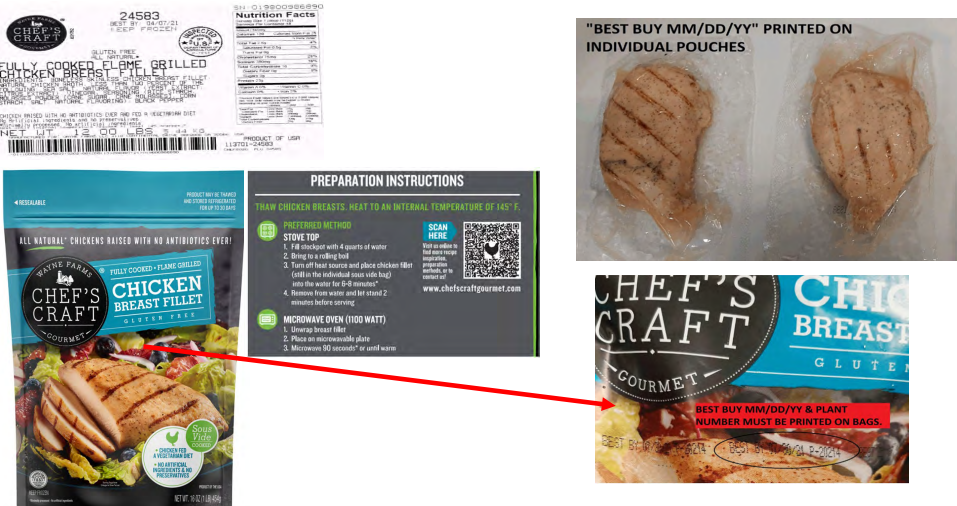In the UK, the FSA reports that Cranswick has closed a poultry site in Hull after the food group discovered salmonella in cooked chicken products, prompting a recall by many retailers. Tesco, Sainsbury, Marks, and Spencer, plus discounter Aldi, are among the chains that have withdrawn from selling products, including sandwiches, wraps, marinated chicken strips, and salads. Tesco’s One Stop convenience stores, Waitrose, The Co-op, and Amazon, were also named, along with coffee-shop chains Starbucks, Costa, and Caffé Nero. The group has launched an investigation with the Food Standards Agency (FSA). @ https://www.just-food.com/news/cranswick-foods-chicken-factory-closes-after-salmonella-contamination/
ruth
Cranswick shares were down after the food group revealed it had identified salmonella in chicken products produced at a UK factory.
ruth
The FDA, CDC, and local partners investigated consumer complaints, and reports received by the FDA from 9/20/2021 to 1/11/2022, of illnesses among infants reported to have consumed powdered infant formula products from Abbott Nutrition’s Sturgis MI facility. On May 12, 2022, the CDC closed the investigation due to a lack of new cases. The FDA established an Incident Management Group (IMG) on April 1, 2022, to continue to work on supply chain and food safety issues. Abbott has committed to completing enhanced testing of stored product batches before making release determinations. The FDA has informed Abbott Nutrition that the agency has no objection to the company immediately releasing products to fulfill specific needs. The FDA is concerned that the risk of not having specific specialty and metabolic products available could significantly worsen underlying medical conditions. Abbott has confirmed with the FDA that the company will consider releasing these products on a case-by-case basis, depending on product availability and the severity of the individual’s need. The recall caused a shortage of infant formula, creating a scandal that prompted the Congress to begin hearing on infant formula shortages. Mainstream media continue to post stories about the parents’ complaints about their inability to obtain infant formula. The FDA claims to be working around the clock to solve the problem. Lawmakers heavily criticize the time elapsed between the first illness report and the beginning of the FDA investigation. @ https://www.fda.gov/food/outbreaks-foodborne-illness/fda-investigation-cronobacter-infections-powdered-infant-formula-february-2022?utm_medium=email&utm_source=govdelivery
Do not use recalled Similac, Alimentum, or EleCare powdered infant formulas produced at Abbott Nutrition’s Sturgis, MI, facility
ruth
Wayne Farms, LLC. (Decatur, Alabama) recalled approximately 585,030 pounds of a ready-to-eat (RTE) chicken breast fillet product that may be undercooked. The USDA/FSIS issued another recall as an extension of previous recalls to include more products. The RTE chicken breast fillet products were produced between February 9 and April 30, 2022. The products were shipped to distributors nationwide and further distributed to restaurants and retail locations. The retail locations are in North Carolina, South Carolina, and Virginia. The problem was discovered when the firm received a customer complaint that the RTE chicken product appeared to be undercooked. There have been no confirmed reports of adverse reactions due to the consumption of these products. @ https://www.fsis.usda.gov/recalls-alerts/wayne-farms-llc-recalls-ready-eat-chicken-breast-fillet-products-may-be-0



